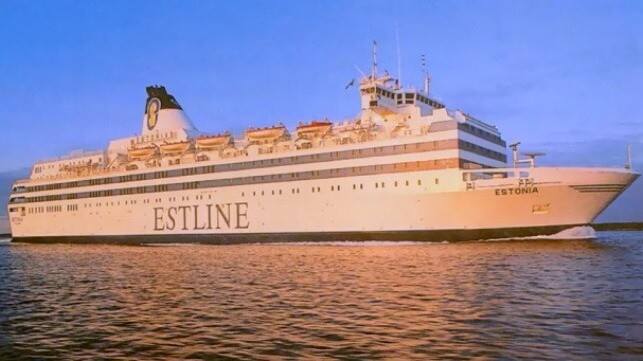Video: High-Tech Survey Looks for Clues in Wreckage of MV Estonia

Accident investigators from Sweden, Finland and Estonia have reopened an inquiry into the sinking of the ferry MV Estonia, which went down in the Baltic in 1994 with the loss of 852 lives.
The Estonia was under way to Stockholm on September 27, 1994, when she encountered heavy weather and 20-foot waves. At about 0055 hours on the following morning, passengers heard and felt a loud bang. 15 minutes later, the vessel's bow visor came loose, leading to flooding on her vehicle decks. She rapidly listed to starboard, and at 0150 - less than an hour after the initial "bang" - she slipped below.
The Estonia's loss has long been chalked up to a mechanical failure and detachment of her bow visor, the movable prow that protected her bow-mounted ro/ro loading ramp. But in 2020, an unauthorized expedition by a team of documentary filmmakers prompted a rethink. Their ROV video footage revealed that there was a 12-foot by three-foot hole in Estonia's hull on the starboard side - a fact that had not been reported previously in the 26 years since the ship went down, despite intense scrutiny of the disaster.
After the discovery of the gash in Estonia's hull, investigators from Sweden, Finland and Estonia agreed to have another look at the wreck site. A preliminary ROV survey in the summer of 2021 determined that the gash was "not the only hitherto unknown damage, but that the hull has a number of deformations and cracks." A set of "Classified" accident inquiry footage obtained and released by Swedish Radio last year showed that at least one hole in the hull appeared to have been bent outwards.
Separately, an independent investigation by a team of academics and engineers found what they believed to be signs of extreme heat on the wreckage of the bow visor - a possible sign of an explosion.
To help evaluate the state of the wreck, the joint investigation team contracted with marine survey provider Ocean Discovery and the dive support vessel VOS Sweet to conduct a laser-scan survey and a photogrammetric survey of the wreck. The laser survey was recently completed, and photogrammetry is under way.

that matters most
Get the latest maritime news delivered to your inbox daily.
After a bumpy start, the photogrammetry work aboard VOS Sweet is off and running, according to the team. It began last Tuesday, but the ROV used for photographing the wreck became stuck under the ship, creating a brief delay. It has since resumed, and the survey work should take about two weeks. The results will be released to the public in September.
